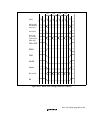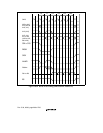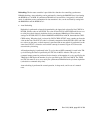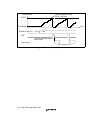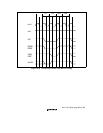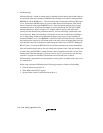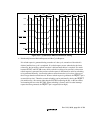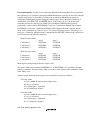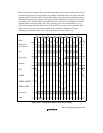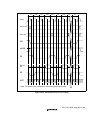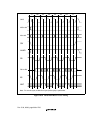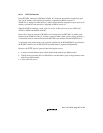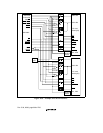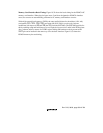
Rev. 5.00, 09/03, page 302 of 760
Power-On Sequence: In order to use synchronous DRAM, mode setting must first be performed
after powering on. To perform synchronous DRAM initialization correctly, the bus state controller
registers must first be set, followed by a write to the synchronous DRAM mode register. In
synchronous DRAM mode register setting, the address signal value at that time is latched by a
combination of the RAS, CAS, and RD/WR signals. If the value to be set is X, the bus state
controller provides for value X to be written to the synchronous DRAM mode register by
performing a write to address H'FFFFD000 + X for area 2 synchronous DRAM, and to address
H'FFFFE000 + X for area 3 synchronous DRAM. In this operation the data is ignored, but the
mode write is performed as a byte-size access. To set burst read/single write, CAS latency 1 to 3,
wrap type = sequential, and burst length 1 supported by the SH7709S, arbitrary data is written in a
byte-size access to the following addresses.
With 32-bit bus width:
Area 2 Area 3
CAS latency 1 FFFFD840 FFFFE840
CAS latency 2 FFFFD880 FFFFE880
CAS latency 3 FFFFD8C0 FFFFE8C0
With 16-bit bus width:
Area 2 Area 3
CAS latency 1 FFFFD420 FFFFE420
CAS latency 2 FFFFD440 FFFFE440
CAS latency 3 FFFFD460 FFFFE460
Mode register setting timing is shown in figure 10.28.
As a result of the write to address H'FFFFD000 + X or H'FFFFE000 + X, a precharge all banks
(PALL) command is first issued in the TRp1 cycle, then a mode register write command is issued
in the TMw1 cycle.
Address signals, when the mode-register write command is issued, are as follows:
32-bit bus width:
A15–A9 = 0000100 (burst read and single write)
A8–A6 = CAS latency
A5 = 0 (burst type = sequential)
A4–A2 = 000 (burst length 1)
16-bit bus width:
A14–A8 = 0000100 (burst read and single write)
A7–A5 = CAS latency
A4 = 0 (burst type = sequential)
A3–A1 = 000 (burst length 1)




